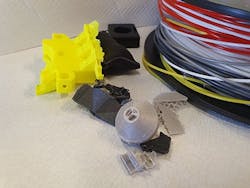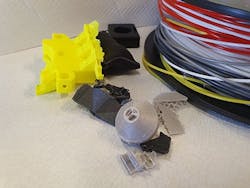Recycling Bolsters Bioplastic Economics
Polylactic acid (PLA), a bioplastic made from starch and other polysaccharides found in sustainable raw materials, is enjoying growing demand. It boasts similar properties to polystyrene and polyethylene terephthalate, and is replacing those polymers in disposable cups, packaging materials and toys. However, producing PLA is relatively costly. Now, though, a process developed by researchers at the University of Birmingham, Birmingham, U.K., and the University of Bath, Bath, U.K., promises to improve PLA economics.
Their process — for the catalyzed methanolysis of end-of-life PLA products using an ethylenediamine Zn (II) complex — yields methyl lactate, a low toxicity, biodegradable solvent that can be used in products as diverse as cosmetics and pharmaceuticals. The new chemical recycling process would allow production of new PLA or other valuable chemicals from the methyl lactate — resulting in a circular economy.
The researchers tested three different PLA samples: a cup, a toy and a 3D-printed material (Figure 1), at three temperatures: 70°C, 90°C and 110°C. With all three samples, they could obtain high selectivities and yields (>94%) of the green solvent despite the different additives, such as colorants, in the items.
Figure 1. New catalyzed methanolysis process can turn 3D printer waste into methyl lactate. Source: University of Birmingham School of Chemical Engineering.
The next step in the development is scaling up from the 300-ml laboratory-based work to pilot trials, says lead researcher Joe Wood, a professor in the school of chemical engineering at the University of Birmingham.
“A goal of scale up would be to create a mobile processing unit that could be transported on a van and deal with a couple of tonnes per day of waste, collected at sites such as recycling centers. Ultimately, a bioplastics refinery would deal with mixed wastes to produce multiple products on a large scale,” he adds.
The catalyst also will get further attention. While the team is happy with both its selectivity and yield, the catalyst does contain zinc. “Although this is less toxic than other metals, one goal would be to use a metal-free organocatalyst instead,” explains Wood.
In addition, while the catalyst didn’t seem too sensitive to the presence of unknown additives and uncontrolled particle size with the three items that were recycled, the researchers need to carry out further characterizations of such factors to determine their detailed effect on the catalyst, he notes.
Since publication of an article in a recent issue of Industrial & Engineering Chemistry Research, the work has attracted interest from several companies and discussions about future efforts are ongoing, concludes Wood.

